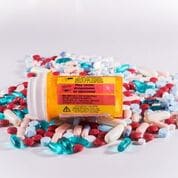
Pharmaceutical companies face many challenges, with hundreds of new drugs required to transition through clinical trial phases, regulatory processes and to market, more quickly and more efficiently. The Centre for the Study of Drug Development (CSDD) estimates the cost of developing a prescription drug that gains market approval at $2.6 billion. Even more remarkable is that 90% of medicines that start being tested in people don’t reach the market because they are unsafe or ineffective.
“May cause drowsiness”
This is a common warning label on medications, yet current methods of drowsiness detection are performed with subjective tests, or objective tests which are time consuming, costly and resource intensive. With the recent spotlight on prescribed sleep medications, the U.S. Food and Drug Administration (FDA) have publically approved label changes specifying new dosing recommendations for widely prescribed sleep medications. The FDA have approved these changes due to the known risk of next-morning impairment with these drugs. Advising patients they should not drive or engage in other activities that require complete mental alertness the day after taking the drug, because levels can remain high enough the next day to impair these activities.
Identifying the “right” dose is a key imperative for many pharmaceutical companies during clinical development. Too high a dose can result in unacceptable toxicity whilst too low a dose decreases chance of showing efficacy.
Current methodologies for measuring drowsiness or wakefulness include ESS, MSLT and MWT, and are used across a wide range of clinical drug trials including shift-work disorder, narcolepsy, insomnia, anti-depressants, and pain medication.
Optalert’s BlinQ system is the next generation methodology for pharmaceutical drug trials which:
• Detects and quantifies alertness, wakefulness and drowsiness
• Monitors and measures adverse effects of medication
• Measures dose response in clinical trials to identify the correct dose
• Helps qualify patients for pilot studies
• Provides objective measures to allow faster decision making ie fail early or proceed to market faster
Optalert’s BlinQ system utilises infrared reflectance blepharometry (the study of eyelid movement), to objectively quantify drowsiness or wakefulness. Infra-red light, which is invisible to the user, is emitted at the upper eyelid. A sensor detects the reflections from the eyelids and an on board processor digitises the reflections at 500 times per second.
Optalert’s technology is now transforming the way pharmaceutical companies are able to measure dose response, efficacy and safety of drugs in clinical trials.
Neurologists and researchers have also been investigating the use of the Optalert BlinQ system to identify biomarkers for other degradations to neurological brain function, such as onset of seizures due to Epilepsy, Parkinson’s, Alzheimer’s, Traumatic Brain Injury (TBI) and Concussion.
Whether you’re looking for exploratory measures or supportive data, you can now quantify drowsiness or wakefulness in clinical drug trials faster, objectively and more efficiently.
Contact us today to find out more info@optalert.com
Or subscribe below to receive all the latest and greatest news from Optalert. [gravityform id=”2″ title=”true” description=”false”]


